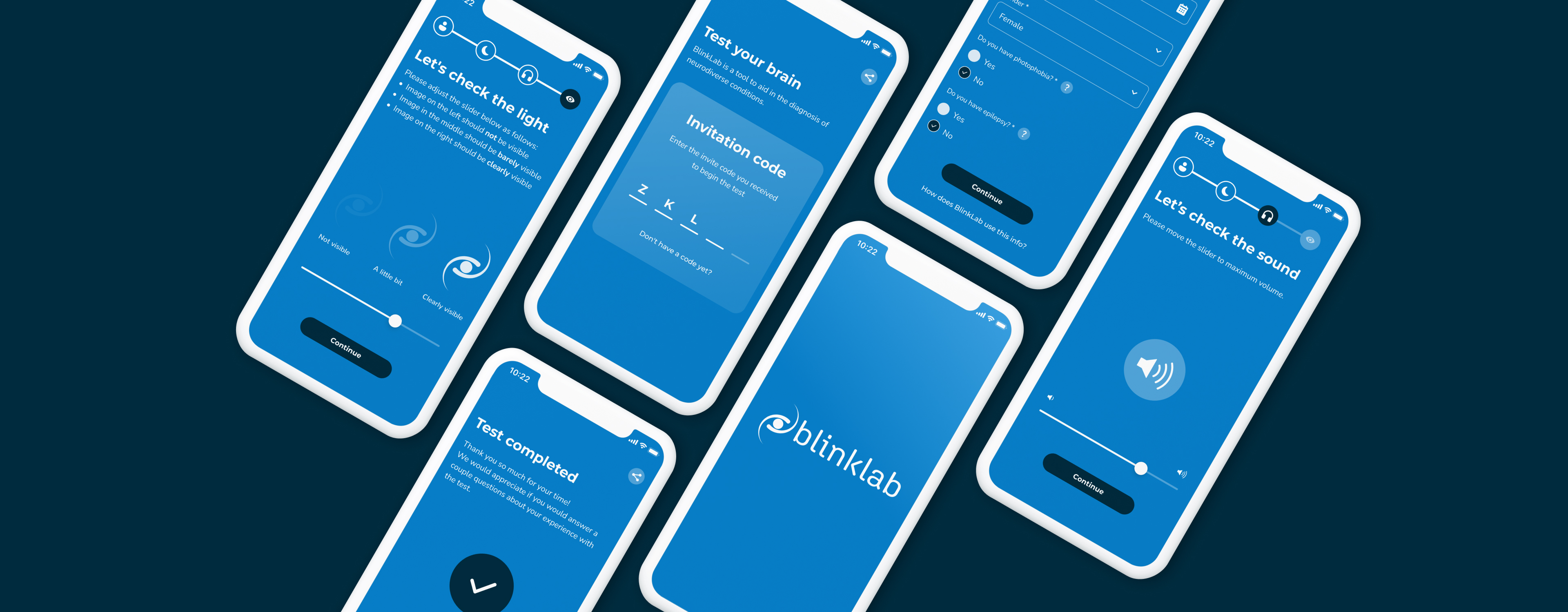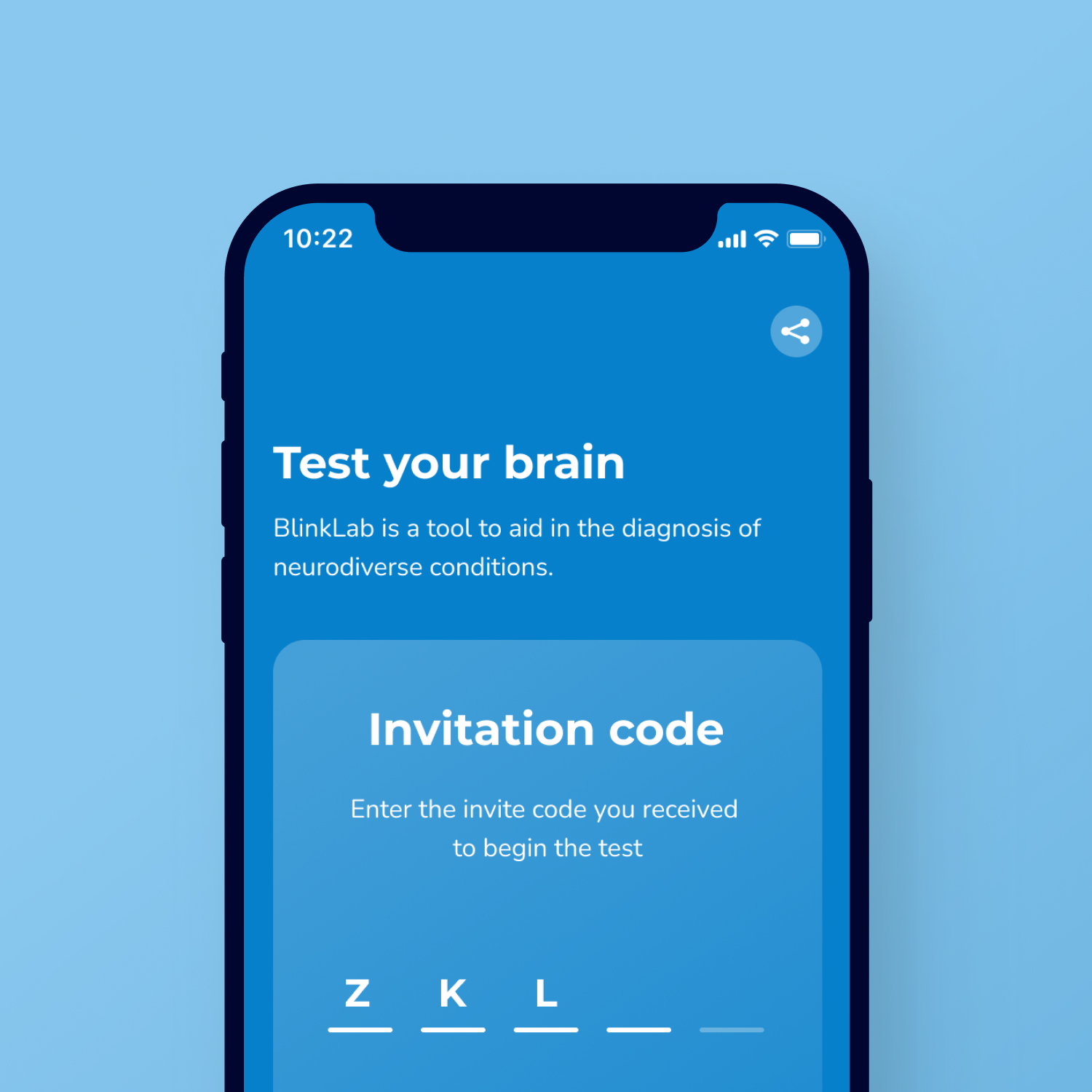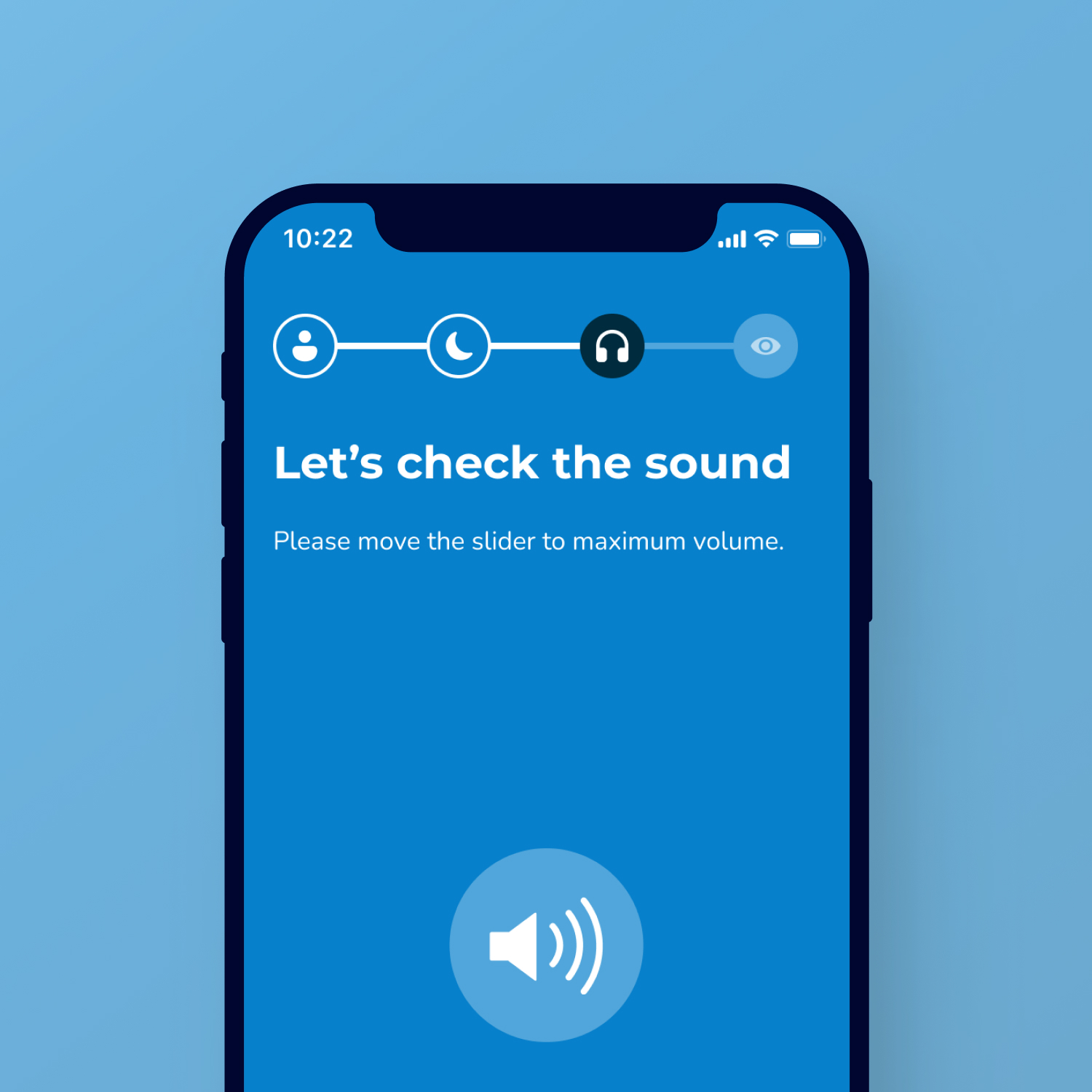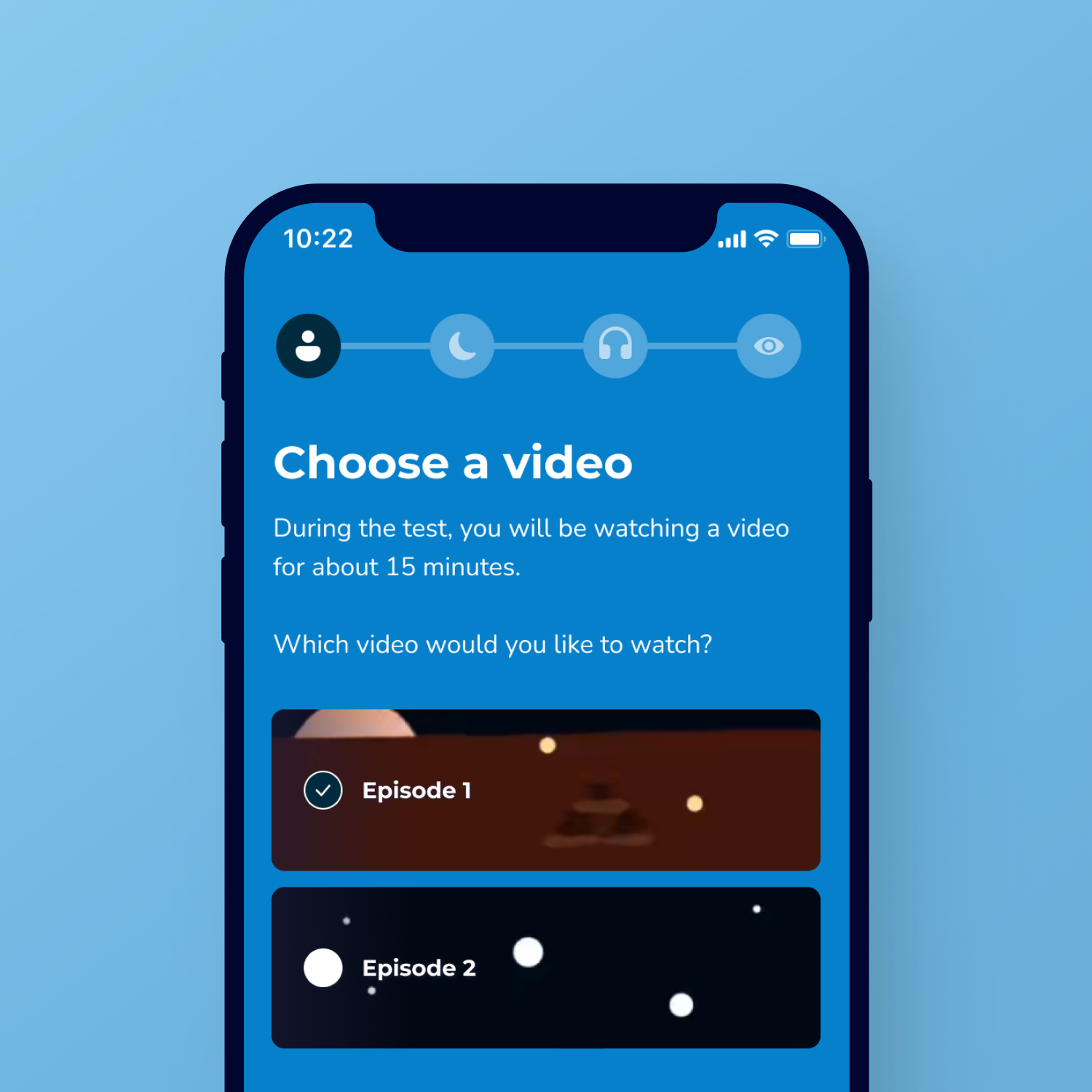BlinkLab
Digital biomarkers for neuropsychiatric research
Together with Henk-Jan Boele and other researchers at the prestigious Princeton and Erasmus MC, Zooma explored the limits of the smartphone by developing BlinkLab. The BlinkLab app uses the iPhone in unconventional ways, turning it into a device suitable for conducting neurobehavioral evaluations. This revolutionary development enables rapid and precise remote testing for conditions such as schizophrenia, autism, ADHD and various forms of dementia.

Whereas previously large installations and strict conditions were required to investigate classical conditioning, BlinkLab researchers are demonstrating through scientific research that studies using this app generate similar results. Classical conditioning is best known from the experiments of Pavlov, who, by pairing a bell with food, had conditioned his dog to salivate as soon as the bell rang. BlinkLab does something similar. Through various stimuli, such as flashes, sounds, tones and shapes, a facial response is elicited, which is sensed to the millisecond and recorded by the app through facial landmark detection. In test subjects, through classical conditioning, the facial response to a bright flash can be linked to a sound, so that test subjects will already blink upon hearing the sound. The degree and speed of response can be affected by various neurological conditions, making this an excellent way to research such conditions.
Transform an ordinary smartphone into a powerful tool for conducting neurobehavioral evaluations. Our innovative technology enables remote testing, making it easy to study neurological conditions such as schizophrenia and autism.
blinklab.org
One of the key features of BlinkLab is its ability to deliver stimuli with millisecond-precise control. This allows researchers to fine-tune the parameters of their experiments and ensure that they are collecting accurate and reliable data.
blinklab.org
One of the challenges in starting this project was figuring out to what extent incentives could be generated. For example, an initial version considered using the camera's flash, but that has the disadvantage that it is on the back of the phone and thus the screen cannot be viewed at the same time. Test subjects, especially children, should instead remain highly engaged in order to perform the experiments as well as possible. It was later decided to use another solution to still be able to generate a strong enough flash at the front.
Furthermore, it is not common for a cell phone to perform various other tasks besides recording a video, such as playing back a video with accompanying sound. And because of its scientific nature, this all has to be done to the millisecond and tracked. The biggest challenge in this project was playing back stimuli at exactly the right time, combined with observing responses accurately to the millisecond.

Invitation code
Sign up with BlinkLab and receive an invitation code that you can use to start an experiment.

Settings
Then a roadmap follows with various settings, such as volume and camera. After that, the experimentation can begin!

Experiment
During the experiment, you watch a video involving images and sound while your camera records your facial reactions.
The back end of the app, where everything can be set up, is designed to be so flexible that researchers can set up a wide range of studies with BlinkLab. For example, there are more than 10 different stimuli to choose from, all of which can be pre-programmed to the millisecond or just deployed at random times. Powerful software is used to analyze the test subject at various points on the face, quickly converting the video into research data.
Zooma built the current version of the BlinkLab app in twelve agile scrum sprints. The first sprints involved researching BlinkLab's requirements and iPhone capabilities. After that, an MVP was built in a few sprints, which was then slowly expanded with more and more different stimuli.
Great work, Zooma! Your professional approach has made it possible for us to now be the first in the world to perform neurological tests on smartphones. Absolutely an impressive achievement that is a testament to your dedication and technical innovation. We are proud to achieve this with you.
Henk-Jan Boele - BlinkLab
Next